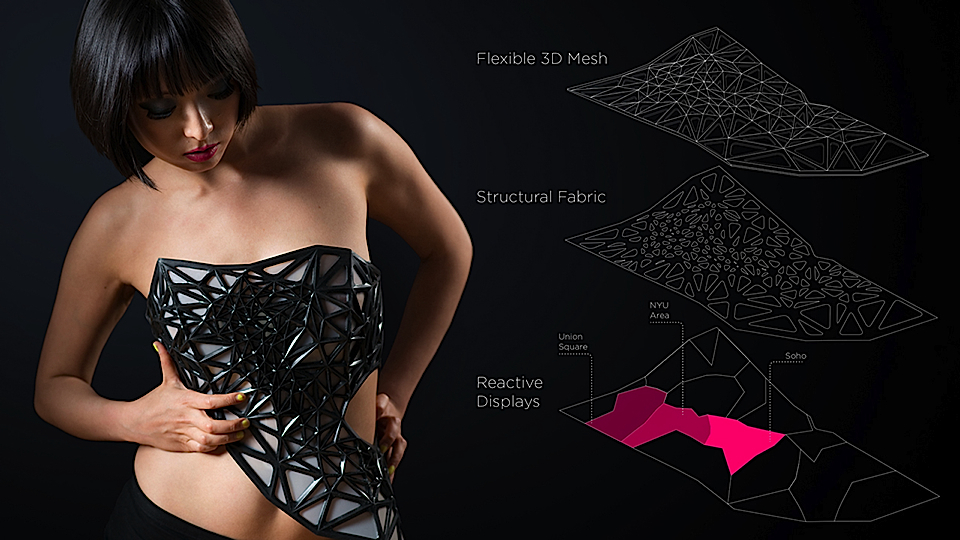US TAB
are you exposed?

In an age of rapid technological innovation, data privacy, user transparency, and personal security are increasingly valuable commodities. As we excitedly embrace new smartphones, wearable tech solutions and intelligent softwares and hardwares, we often unconsciously agree to give services such as Google or Facebook large amounts of personal data. With this data, we also hand over clear portraits of who we are, what we value, where we shop and how we consume information.
x.pose is a project by designers Xuedi Chen and Pedro G.C. Oliveira that examines the implications of our data-centric and data-driven culture. Using 3D printed flexible mesh, Chen and Oliveira have created a wearable sculpture with 20 hand-cut reactive displays. These displays expose more of the user’s skin as more data bytes are connected. As more personal data is collected, the more exposed the individual becomes – literally and figuratively. The more connected we become, the more transparent we appear. The sculpture reflects this transformation in real time, changing its opacity to expose more of the user’s skin as more amounts of data are collected and connected.
Chen and Oliveira leave us with the following questions:
By participating in this hyper-connected society, how much of myself do I unknowingly reveal?
To what degree does the aggregated metadata collected from me paint an accurate portrait of who I am as a person?
What aspects of my individuality are reflected in this portrait?
Production
“The first step was to build a mobile app and server to automatically collect my data over time. Done using Node.js and PhoneGap.
Second: the recorded data set was used as the basis for the generative aspects of the personalized wearable couture. The output is an abstract 3D mesh armature of my location data points collected over about a month. The dataset was fed into processing to produce the pattern and exported to Rhino to make the 3D mesh.
Lastly, the mobile app and server is used to provide real-time data transmission through bluetooth to an Arduino, which controls reactive displays that change in opacity to reveal the wearer’s skin. This occurs in proportion to the volume of information that is passively generated.”
ITP NYU Thesis 2014 – Special thanks to: Nancy Hechinger, Ben LIght, Eric Rosenthal, Thesis class, Talya Stein, ITP community, Family & Friends – Photography By: Roy Rochlin – Model: Heidi Lee – Makeup: Rashad Taylor
Beth Lauck
itp.nyu.edu
xc-xd.com
Beth Lauck contributes posts about emerging and disruptive design and communications trends, and helps forecast why and how these changes will affect market intelligence. She also maintains a blog devoted to the intersections between fashion, future studies and trend science.
www.what-nxt.com



